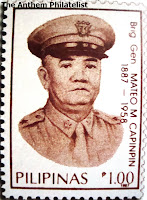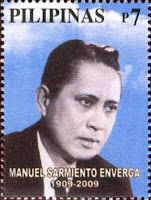The National Anthem of Germany
 The text of the anthem has been written in 1841 by the liberal poet and professor August Heinrich Hoffmann von Fallersleben, using the melody of the Austrian imperial anthem "Gott erhalte Franz den Kaiser" (God save Franz our Emperor), which has been composed by the famous classical composer Joseph Haydn in 1797 and which appears in his "Emperor Quartet". Hoffmann von Fallersleben wrote his text on the small island of Helgoland off the Northwest German coast, which at that time was under British rule.
The text of the anthem has been written in 1841 by the liberal poet and professor August Heinrich Hoffmann von Fallersleben, using the melody of the Austrian imperial anthem "Gott erhalte Franz den Kaiser" (God save Franz our Emperor), which has been composed by the famous classical composer Joseph Haydn in 1797 and which appears in his "Emperor Quartet". Hoffmann von Fallersleben wrote his text on the small island of Helgoland off the Northwest German coast, which at that time was under British rule.He had been deported from the Kingdom of Hannover because of his liberal ideas, which included the demand to establish Germany as a unified nation. Consequently, the first verse of the "Lied der Deutschen", beginning with the words "Deutschland, Deutschland ueber alles" (Germany, Germany above all) was originally meant as an appeal that the idea of a unified Germany should be more important than the many particular principalities which existed at that time.
However, when Germany became a united country in 1871, the "Lied der Deutschen" was ignored officially, rather the the former Prussian royal anthem "Heil Dir im Sieger
 kranz" was used unofficially. Although Germany had been proclaimed a Republic on 9th November 1918 upon its defeat in World War I, it needed nearly four years until "Lied der Deutschen" was declared the new national anthem by the social democratic President Friedrich Ebert on August 11th, 1922, although it was used on state occasions in the intervening years. At that time, all three verses were used.
kranz" was used unofficially. Although Germany had been proclaimed a Republic on 9th November 1918 upon its defeat in World War I, it needed nearly four years until "Lied der Deutschen" was declared the new national anthem by the social democratic President Friedrich Ebert on August 11th, 1922, although it was used on state occasions in the intervening years. At that time, all three verses were used.The anthem was even retained when the Nazis seized power in 1933, however the first verse of Hoffmann von Fallersleben's song was misused as a slogan that Germany should rule "above all" other countries, Haydn's classical melody was changed into a military march, and the anthem was added with the party song of the Nazi party, the Horst Wessel Lied. In 1945, the use of all national symbols of Nazi Germany, including the "Lied der Deutschen" was prohibited by the Allies.
In 1945, Germany was governed by the Allied powers and thus had no official anthem. And when West and East Germany were founded in 1949, initially neither state wished to use the "Lied der Deutschen" because of its association with the Nazi government and its misuse of the sentiment in the lyrics.
After Germany had become reunified on 3rd October 1990, Federal President Richard von Weizsaecker confirmed in a letter to Chancellor Helmut Kohl, dated 19th August 1991, that the third verse of Hoffmann von Fallersleben's "Lied der Deutschen" (Song of the Germans) with Joseph Haydn's melody are the official national anthem of the reunified Germany. Contrary to popular belief, no stanza is currently forbidden to be sung, however, only the third stanza is the official national anthem. The regions of Germany also have their own local anthems, some have been used for centuries, some are new inventions after the war.
The stamp above features Haydn issued in 1959, the anthem composer. Below is a stamp of Fallersleben, the lyricist issued in 1991.






